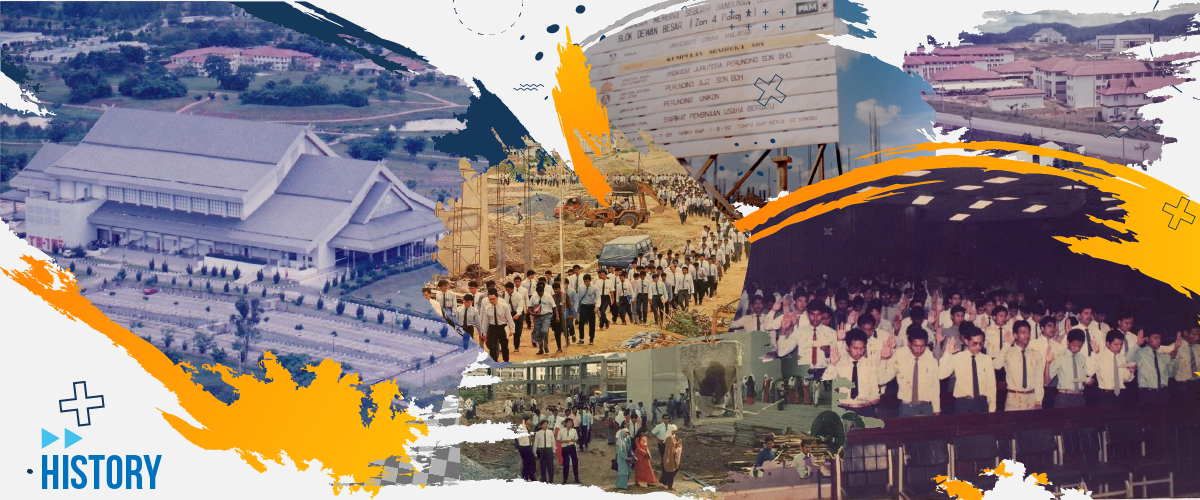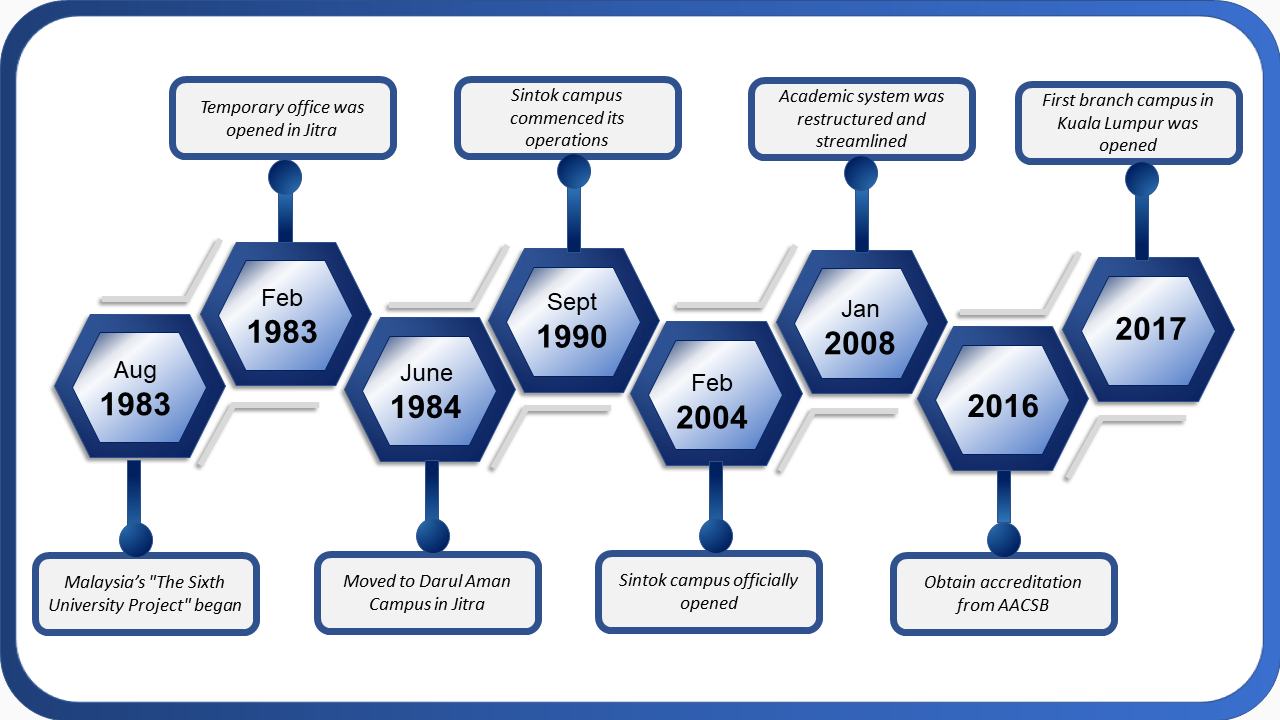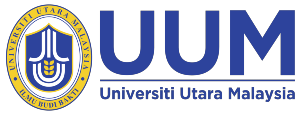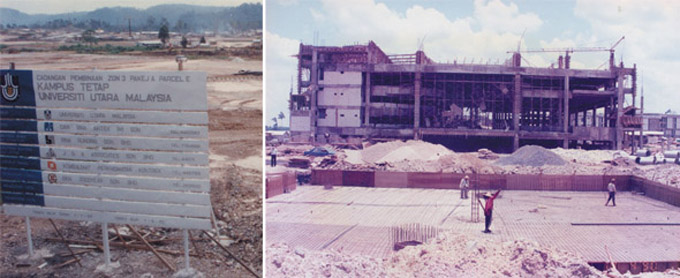
History
Malaysia’s "The Sixth University Project" began in August 1983 under the auspices of the Ministry of Education and the project was realized in the form of Universiti Utara Malaysia, the sixth public university of Malaysia.
After the university was designated with its official name, its temporary office was opened in Jitra on 15th of February 1984.
The office of UUM was then moved to Darul Aman Campus in Jitra in June 1984, upon the completion of the first phase of the project when the university’s first academic year began. Located on a 62-acre tract of land in Bandar Darulaman, the provisional campus was located close to important towns such as Alor Setar (18 kilometres away) and Jitra (4.8 kilometres away).
At the same time, the planning process commenced for the construction of a new, permanent campus on a 1,061-hectare piece of land in Sintok in the district of Kubang Pasu, located 10 km east of Changlun and 48 km north of Alor Setar. This up-and-coming new campus is located near the Thai-Malaysian border.
The Sintok Campus, the official name for the permanent campus where UUM continues to be based until today, commenced its operations on 15 September 1990. The campus is located in a valley of lush tropical forests watered by the twin rivers of Sungai Badak and Sungai Sintok that flow through the middle of the campus, nestled in between the northern hills.
On 17 February 2004, the Sintok Campus, of which construction cost approximately RM580 million was officially opened by the Royal Chancellor, His Royal Highness Sultan Abdul Halim Mu’adzam Shah. The main buildings in this campus are the Sultanah Bahiyah Library, the Sultan Sallehudin Chancellery, the Sultan Badlishah Mosque, the Mu’adzam Shah Hall, the Tan Sri Othman Hall, the Sports Complex, the Varsity Mall, the Budi Siswa building, the Convention Complex and the various faculty buildings home to the various academic colleges that form the backbone of UUM’s tertiary education programmes.
The sheer size of the campus meant that 107 hectares of forest has been set aside for the development of facilities open to everyone as well as facilitating edu-tourism in the region to the public, on behalf of the university. Some of the facilities inside the campus include a picnic area, a deer farm, an 18 hole golf course, a go-kart circuit, a shooting and archery range, as well as other similarly attractive locations.
In January 2008, the university’s academic system was restructured and streamlined, with the previously separate 13 faculties merged into three main academic colleges: UUM COB (UUM College of Business), UUM CAS (UUM College of Arts and Sciences), and UUM COLGIS (UUM College of Law, Government, and International Studies).
In 2016, UUM managed to obtain accreditation from AACSB International, the longest serving global accreditation for business schools offering both undergraduate and postgraduate degrees in business and accounting. This achievement is significant due to the fact that the accreditation is an endorsement of a business school’s excellence in its programmes, having been achieved by less than five percent of the world’s business programmes. For five years running since 2016, Malaysia has continued to successfully maintain its accreditation status as of 2020.
Even though UUM main campus is located in the northern Peninsular Malaysia, the need to appeal to other regions of the country is also acknowledged, thus leading to the opening of UUM’s first branch campus in Kuala Lumpur in 2017, having started out as a learning centre in 2006. Located near Kampung Baru and Chow Kit Road, UUMKL offers postgraduate programmes in various academic fields – Management, Human Resource Management, Finance, Islamic Finance and Banking, Occupational Safety and Health Management, Managerial Communication, Counselling, Social Work, Decision Science, Correctional Science, Journalism, Education, Commercial Law, Corporate Law, Human Resource Law, Public Management, and International Business. As things stand, UUMKL is currently a home to 20 resident faculty members from various academic fields, supported by faculty members from UUM main campus and adjunct professors from both local and overseas institutions.











